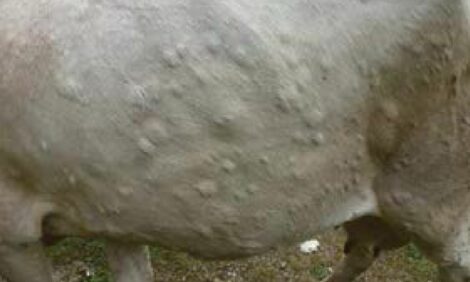



Avoiding cold weather injuries like hypothermia, frostnip, frostbite
It's about to get cold in the northern hemisphere. Make sure you're prepared for our changing weather systemsQuite often agricultural workers must be outside in cold, harsh conditions. Cold environments can be dangerous. According to OSHA, more than 700 people die of hypothermia each year in the United States. The most common types of cold weather injuries are hypothermia, frostnip, and frostbite. A good way to prevent cold weather injuries is to dress properly for the conditions.
Hypothermia is a condition where your body loses more heat than it produces. Signs of hypothermia include a change in mental status, uncontrollable shivering, a cool abdomen, and low core body temperature. Signs of severe hypothermia would include rigid muscles, dark puffy skin, irregular heart rate and breathing, and unconsciousness.
Frostnip and frostbite are conditions that mainly affect the hands, feet, ears, and nose.
- Frostnip is a freezing of water on the skin surface. Skin that is frostnipped will look red and swollen. Frostnip may be the first sign of frostbite.
- Frostbite is a more serious condition in which skin tissue freezes. The most severe cases of frostbite can result in gangrene and amputation. The symptoms of superficial frostbite include skin that looks white, waxy or grayish yellow. The skin feels cold, numb, and stiff. The underlying tissue feels soft when pressed. The symptoms of deep frostbite include waxy pale skin that feels hard and cold. The affected area cannot be depressed.
Layer clothing
When dressing for cold weather it is best to wear layers of clothing. Wearing at least three layers of clothes is the best way to stay warm and comfortable. Layers make it easier for you to control your body temperature. You can remove or add layers according to the conditions and your exertion level. Avoid wearing one single, heavy outer layer that could cause you to sweat.
Change wet clothing as soon as possible. Wet clothes cool you faster because of evaporation. When clothes are wet, they can lose up to 90% of their insulating value. Layers of clothing also create pockets that trap warm air near your body. Clothing should be loose fitting to allow for maximum circulation.
Polypropylene thermal underwear is a good choice for the inner layer next to your body. Polypropylene wicks moisture away from your body allowing moisture to pass through to outer layers of clothing. Polypropylene also retains more insulating value when wet and dries quickly when wet.
Tips to keep you warm
- Outer jackets should be wind resistant and have a hood.
- Remove strings that can be caught in rotating equipment.
- Always wear a hat. Putting a hat on can make your fingers and toes feel warmer. 70% or more of the body’s heat can be lost through an uncovered head.
- Mittens will keep your hands warmer than gloves, although they will limit your dexterity. For maximum warmth, you can wear glove inserts inside of larger mittens.
- Choose winter boots that are a little big to allow for extra layers of socks.
- Pac-type boots with removable felt liners are good for farm work. They have rubber bottoms that keep you feet drier and you can change the felt liner to let it dry or to replace it periodically.


